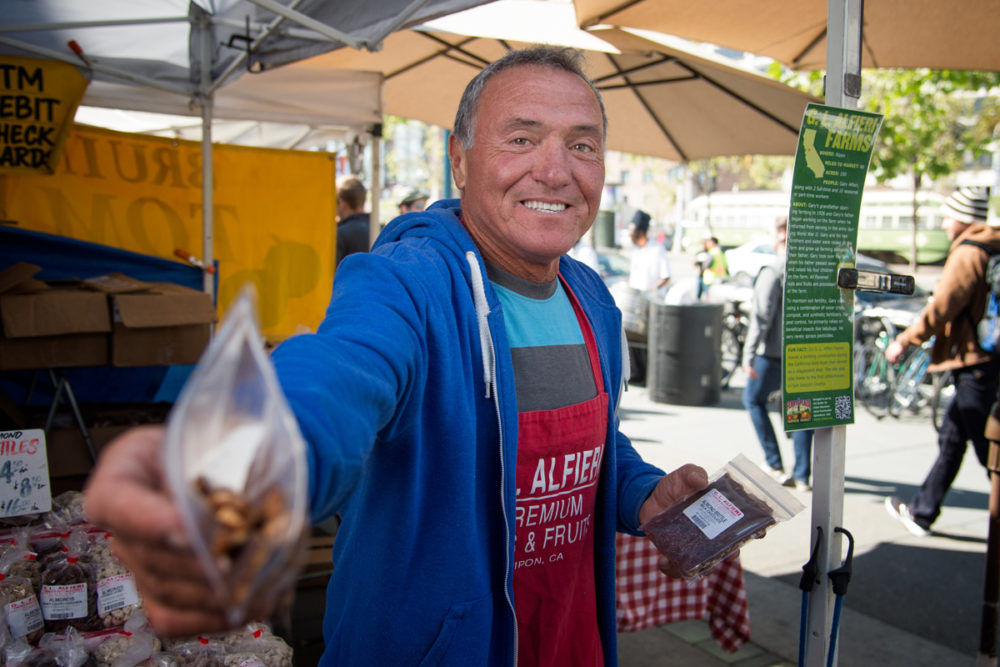G.L. Alfieri Farms

People
Gary Alfieri, with 2 full-time and 10 seasonal or part-time workers
Farmland
150 acres in Ripon, about 90 miles to San Francisco
About
Gary’s grandfather started farming in 1926 and Gary’s father began working on the farm when he returned from serving in the army during World War II. Gary and his two brothers and sister were raised on the farm and grew up farming alongside their father. Gary took over the farm when his father passed away and raised his four children on the farm. The farm grows almonds and other nuts and tree fruit, and is known for favorites like its chocolate-covered almond brittle at the farmers market.
To maintain soil fertility, Gary uses a combination of cover crops, compost, and synthetic fertilizers. For pest control, he primarily relies on beneficial insects like ladybugs.
